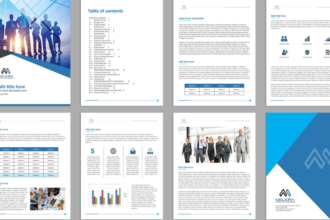Cybersecurity has never been more vital. Every day, new vulnerabilities are discovered in software and hardware systems, and how these security flaws are handled can determine the safety of millions of users. This is where responsible vulnerability disclosure comes into play—a practice that helps organizations address potential threats before they can be exploited by malicious actors.
Responsible disclosure involves ethical security researchers or organizations reporting vulnerabilities to the appropriate vendor in a secure, private manner, giving them time to fix the issue before the vulnerability becomes public knowledge. This collaborative process plays a crucial role in maintaining trust, protecting data, and improving the security landscape for everyone.
Why Timely and Ethical Reporting Matters
Security vulnerabilities can range from minor bugs with limited impact to critical flaws that open the door for complete system compromise. In the hands of cybercriminals, these flaws can lead to data breaches, service disruptions, financial loss, or reputational damage for companies and governments alike.
The purpose of responsible disclosure is not to embarrass software vendors or draw attention to flaws—it is to give organizations the opportunity to fix the issue before it becomes a threat in the wild. Ethical hackers and cybersecurity researchers act as a line of defense, often discovering vulnerabilities through careful testing and analysis, and then working with vendors to address the weaknesses behind the scenes.
Public awareness and industry standards around responsible disclosure have grown significantly. Platforms like HackerOne and Bugcrowd have formalized the process through “bug bounty” programs, which reward researchers for disclosing issues through approved channels. These efforts have encouraged more transparency, trust, and collaboration between researchers and vendors.
Lessons from Real-world Vulnerabilities
The importance of responsible disclosure becomes particularly clear when examining real-world examples of security vulnerabilities. By understanding recent Fortinet CVE disclosures, organizations can better grasp how crucial timing, transparency, and proper remediation are in preventing widespread attacks. Fortinet, a major player in the network security space, has faced several high-profile vulnerabilities over the years. In each case, how the company communicated, patched, and supported its clients made a significant difference in mitigating the risks. By analyzing these examples, cybersecurity professionals can learn how early communication and cooperation between researchers and vendors can prevent exploitation and build stronger digital defenses.
Vulnerability disclosures like these serve as reminders that even well-established security platforms are not immune to flaws. What matters most is how quickly and responsibly those flaws are addressed. When vendors and researchers work together in good faith, users benefit from faster fixes and a more secure digital environment.
The Role of Coordinated Disclosure Policies
Many organizations now have formal policies for coordinated vulnerability disclosure (CVD), which outline the steps researchers should take to report issues and the timeline vendors follow to respond and resolve them. These policies are vital for setting expectations, avoiding legal disputes, and ensuring both parties act in the best interest of users.
A well-structured disclosure policy typically includes:
- A secure communication method for submitting vulnerabilities
- A timeline for acknowledgment and resolution
- A coordinated plan for public disclosure once a fix is available
- Clear attribution for the researcher (if desired)
Vendors that fail to implement or follow such policies may alienate the research community, miss critical warnings, or even end up with vulnerabilities exposed publicly without a fix—leaving users at risk and reputations damaged.
Challenges and Ethical Dilemmas in Disclosure
While the benefits of responsible disclosure are clear, challenges still exist. Researchers may fear legal repercussions, especially when working with companies that lack clear disclosure channels. Others may be tempted by financial rewards from less ethical sources, such as black markets or state-sponsored actors.
On the vendor side, companies may struggle with limited resources, bureaucracy, or denial, delaying patch development or resisting disclosure altogether. Some fear reputational damage and opt to keep quiet about vulnerabilities, a decision that can backfire once the information becomes public through other means.
Ethical behavior, mutual respect, and clear communication are key to overcoming these challenges. The industry must continue promoting a culture where responsible disclosure is encouraged, protected, and rewarded.
How Organizations Can Prepare
Being proactive is important. Organizations should establish a vulnerability disclosure program (VDP), clearly outline their expectations for researchers, and dedicate resources to promptly investigate and resolve reported issues.
Security teams should maintain open lines of communication with the wider research community. Building these relationships can result in faster detection of threats and more efficient incident response. Vendors who are receptive to feedback and take quick action when vulnerabilities are identified are more likely to maintain customer trust—even in the face of critical disclosures.
Responsible vulnerability disclosure is not just a technical process—it’s a vital element of modern cybersecurity strategy. By fostering collaboration between researchers and vendors, organizations can turn potential risks into opportunities for improvement. It’s a cycle of transparency, trust, and action that keeps systems more secure and users better protected.
In a constantly evolving digital environment, the importance of how we handle vulnerabilities cannot be overstated. When handled responsibly, vulnerability disclosures help safeguard not just individual systems, but the integrity of the internet as a whole.












